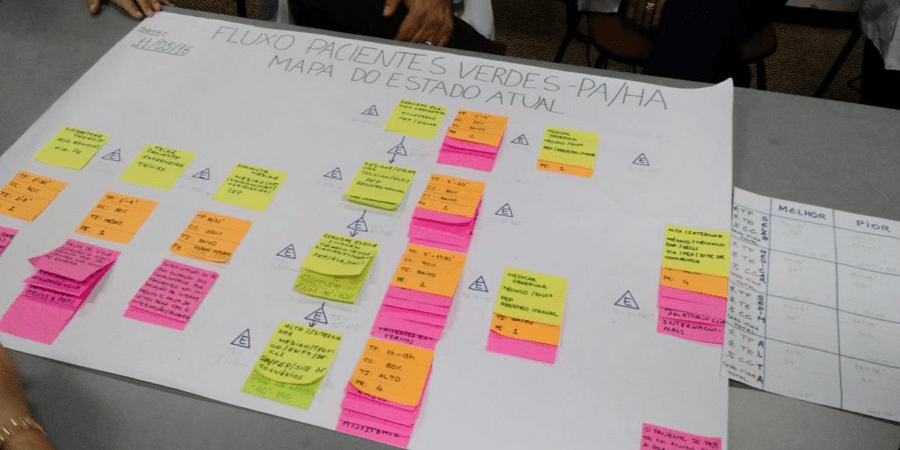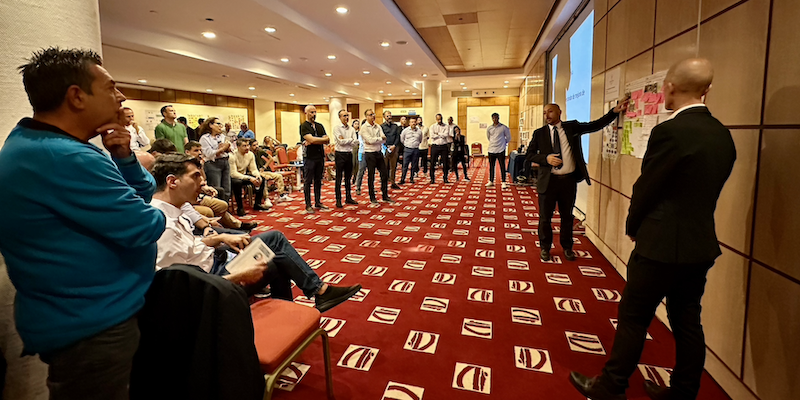
Leveraging lean thinking to make our community healthier
INTERVIEW – The inspirational CEO of a community health center in Massachusetts discusses leadership transition, the role of lean facilitators and front-line engagement.
Interviewee: Kiame Mahaniah, CEO, Lynn Community Health Center
Roberto Priolo: What can you tell me about the community LCHC serves?
Kiame Mahaniah: Lynn – located 10 miles north of Boston – is an immigrant city, with half of the population having come from another country within one generation (kids here often speak English and another language). It is very diverse. We provide care in 60 languages, the most common being English, Spanish, Cambodian, Arabic and Russian. Our workforce is a reflection of the community we serve and is also very diverse.
As an institution, Lynn Community Health Center tends to serve the lower half of the population: 90% of our patients qualify as officially poor by American federal guidelines. Like most social justice institutions, we never have enough resources to do everything we want to do, even though we are blessed to be in Massachusetts, which is one of the richest states in the US, with one of the most generous and comprehensive social welfare networks in the country. If you are in the country legally, you get guaranteed insurance, which makes our job much easier. Only 8-9% of our patients are without insurance.
I feel blessed I was able to find work that allows me to bring together what I love to do professionally with my spiritual values.
RP: What brought you to lean thinking in the first place?
KM: It was my predecessor – Lori Berry – who initiated the lean transformation. She was drawn to lean thinking by the promise of front-line engagement. What sold mewas the idea that without needing more money we could improve our services, so that our performance could match our passion. I just couldn’t believe we could have so many passionate and talented people and so much chaos in our processes.
RP: What were the main milestones in the lean journey?
KM: We have a GE factory here in Lynn. Some of their people trained our managers around two and a half years ago, and that was really the first time we looked through the keyhole, so to speak. In the meantime, Lori had gotten in touch with Alice Lee at the Lean Enterprise Institute and the GE Foundation had offered to fund our lean learning. To me, the official start of our lean journey was our visit to Thedacare in Wisconsin: that’s when we learned that not only was this possible, but that a hospital much bigger than LCHC had actually done it!
When we got back from Wisconsin, we started to think about the work of management. We went through a series of exercises, in which we got sharper and sharper in our lean thinking. We went through X matrixes and three-month look-aheads, we run prioritization exercises, went on retreats and visited other organizations. For the past year or so (things slowed down a bit during the CEO transition last October), the picture we have been painting of the job and the questions we have been formulating have gotten better and better. We have already reached a point where gemba walks have become a natural part of our week, we consistently develop our middle managers, and we challenge ourselves to actually change behaviors (whether it is about how we supervise, who we hire or how we run a meeting).
Another important milestone was making our internal coach, Kim Eng, Chief of Staff during the transition. Having an industrial engineer, who is trained in lean and has the formal authority to really influence the agenda, has been critical.
Lean is now ingrained as a way of thinking in the leadership of Lynn Community Health Center, and we are now trying hard to get it ingrained as a way of doing as well.
RP:What about the front line? Where are they at?
KM: Our goal is to spread lean as wide and as deeply as we can. We currently have two teams who are really living and breathing lean thinking: our model cell – a regular primary care team, whose change was just astounding – and the emergency care team. If you went to talk to one of our receptionists or to a medical assistant, they would know what’s going on – even though they might not use the buzzwords. About a quarter of our managers are engaged in their own lean journeys.

RP: I would like to ask you more about the role of Kim, your chief of staff. How does she impact the transformation?
KM: In martial arts, you have a master – Alice Lee from LEI in our case – and advanced black belts who makes the adjustments and the corrections we need. Kim is our advanced instructor. She has a very difficult job: she has concrete things to do, but also has to assist the management team in steering the ship in the right direction. I don’t know how we would do it without an internal coach. I for one wouldn’t want to tackle my job of a CEO without having someone like Kim supporting us.
RP: You took over from Lori last October. How did you ensure the transition would be smooth?
KM: I don’t think Lori and I sat down and asked each other how we were going to continue the lean journey. It was just assumed that I was going to do my best to continue what had been started. Because I was being coached by LEI, I was able to visualize what Lori had done as particular stages in our journey and could then identify what the next steps should be. I could see whether we were ready for more and what we were ready for – like a management system, for example.
The ability to document processes and problems (the left side of the A3) that lean gives you really helped me to identify possible natural steps we could take to keep moving forward.
RP: From the point of view of LCHC employees and of patients, what would the most noticeable changes be?
KM: First of all, employees see me all the time. I have made the struggle of management more visible to them. In my first 90 days, I would do six to ten hours a week at the gemba, asking questions, documenting improvement and problems, and supporting people. I wanted them to know how interested senior management is in what’s going on at the front line. They understand that we are trying to “get it”. There is now an expectation that change is on its way. I have recently started to “socialize” my A3 across the organization: I built the first draft, worked through it with senior team and changed it, then I worked on it with managers, and now I have begun to review with the front line.
From a patient’s point of view, on the team where lean is now an every-day thing, it is astonishing to see how quickly you can be seen by the clinician of your choice. It seems normal now, but it wasn't in the past. I want our patients to not notice that we have been “doing lean” – I just want them to get as smooth a service from us as possible. I want them to experience dignity at Lynn, and I want them to use it as a springboard to tackle other challenges in their lives.

RP: How do you gradually ensure people become more and more independent in their ability to solve problems?
KM: In general, the front line is always ready to take on the responsibility of improving their jobs (everyone gets frustrated of doing things the wrong way). It is with the managers we are struggling with. A mistake I have made in talking with senior and middle managers was talking about the need for them to “pull back”, because I think they interpret it as a loss of authority and status. I should instead talk about the problems they tackle every day (Why are patients waiting? Why is the floor dirty? Why is the phone not being answered?) and explain that lean empowers people to solve problems for themselves, without the need for management to get involved in the nitty gritty of it.
Up until now, we have sat at a table and talked about problems. Now we have to go to the gemba and really dive into the work. We are on the verge of doing it, and it’s both exciting and terrifying. It’s clear to me our issue is management, but we are working on it. The front line is actually waiting for us to cut the ribbon so that they can start running.
THE INTERVIEWEE

Read more


NOTES FROM THE GEMBA – Follow Catherine on another one of her gemba walks around French companies. This time, she visits a manufacturer of inspecting machines near Bordeaux, with a visionary leader and a great story.


FEATURE – Long waiting times are bad for both patients and hospitals, but when we talk about heart attacks reducing them becomes a moral imperative. Here’s how Hospital Aliança in Brazil is doing it.


FEATURE – Faced with increased production volumes, this Dutch company realized the need to improve its processes by developing people skills.


FEATURE – Our editor attends a Lean Day at Dreamplace Hotels & Resorts in Tenerife. In this report, he shares his thoughts about team building, following up on improvements, and yokoten.

